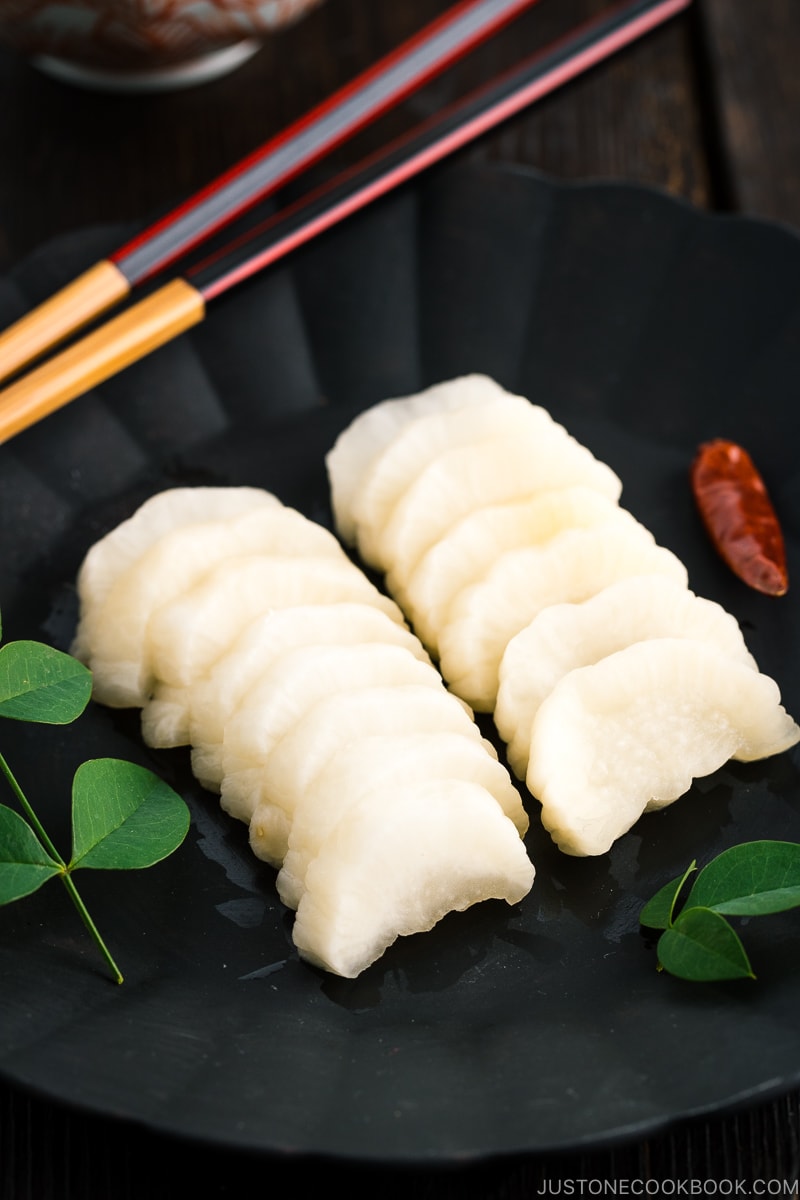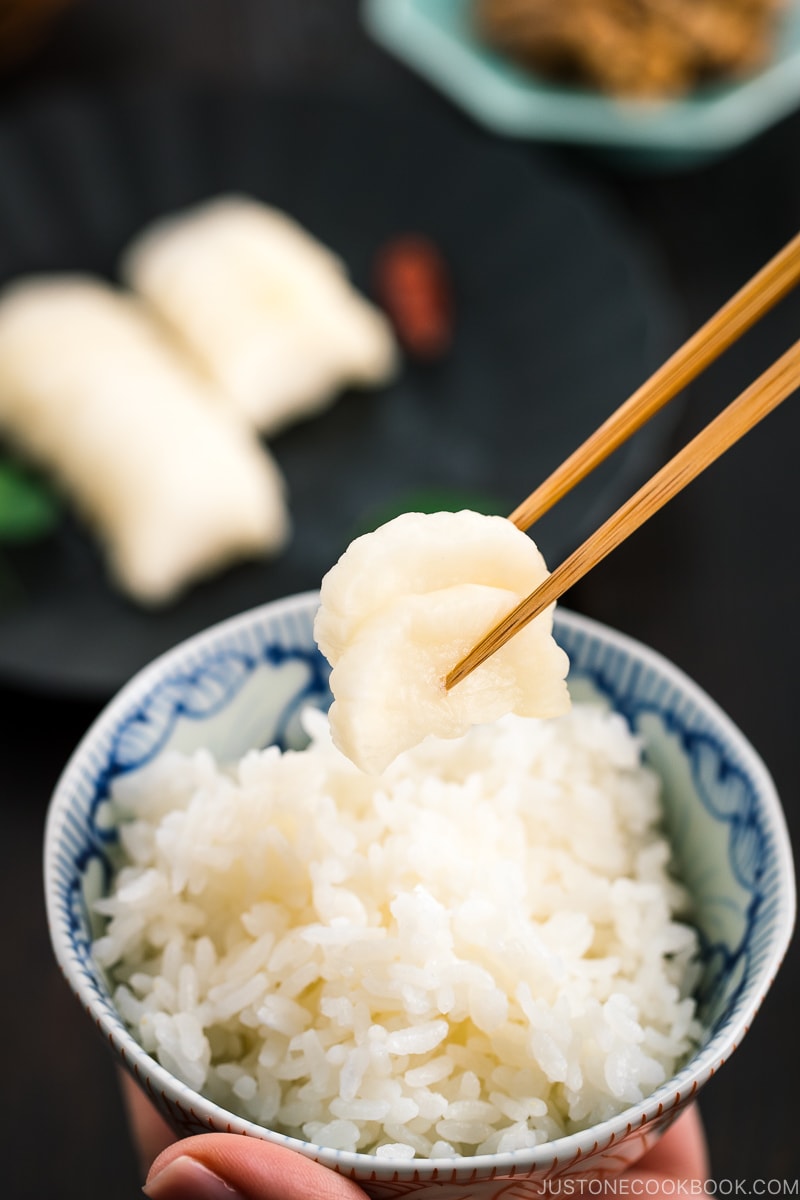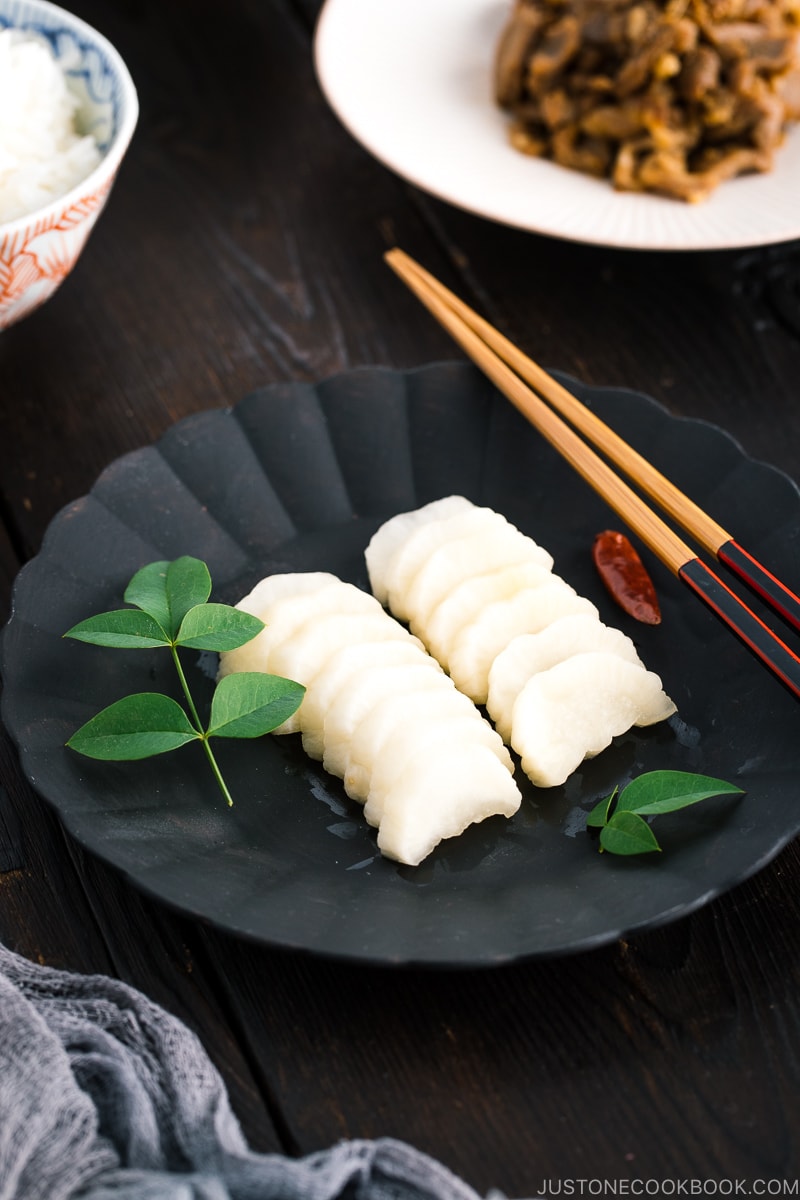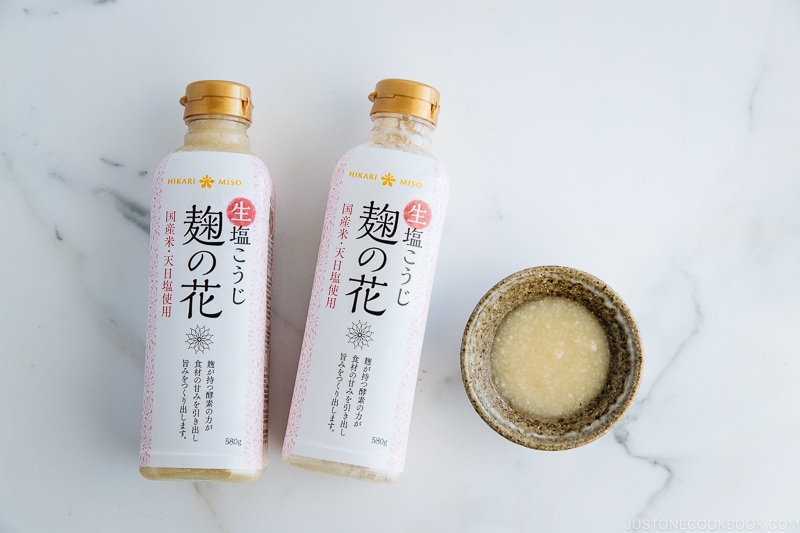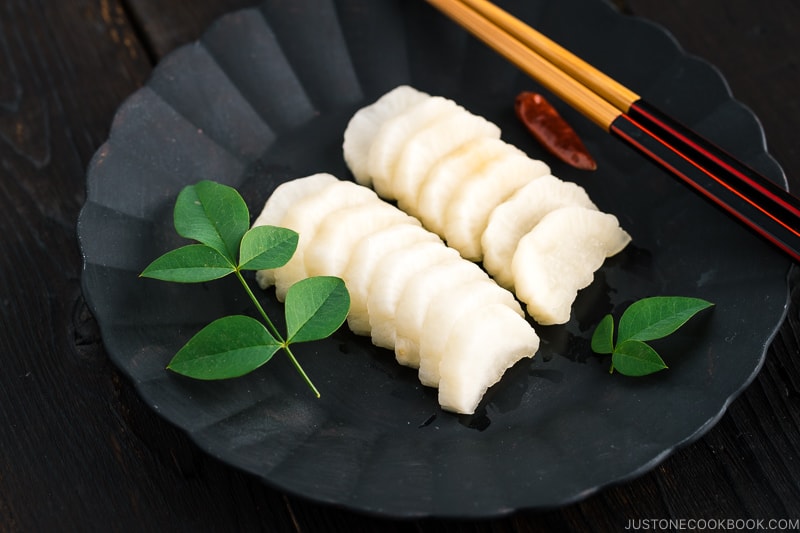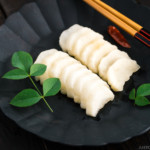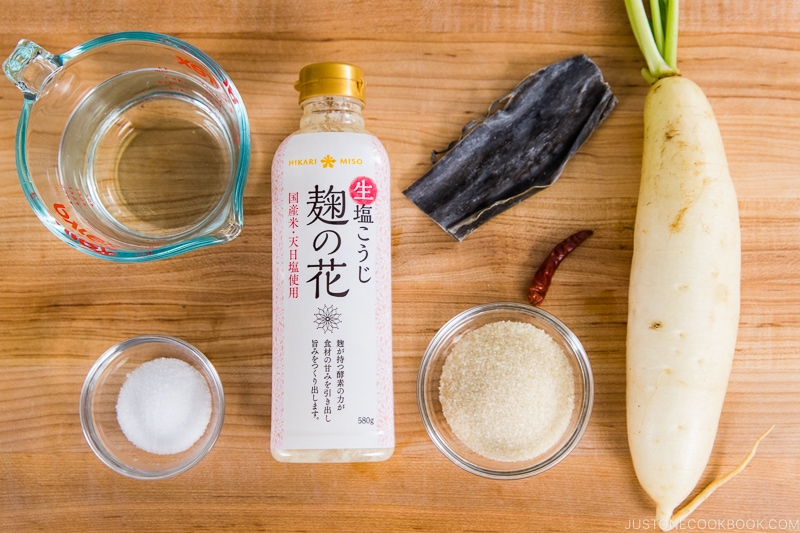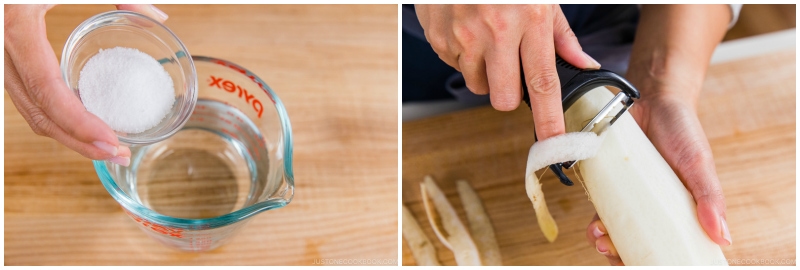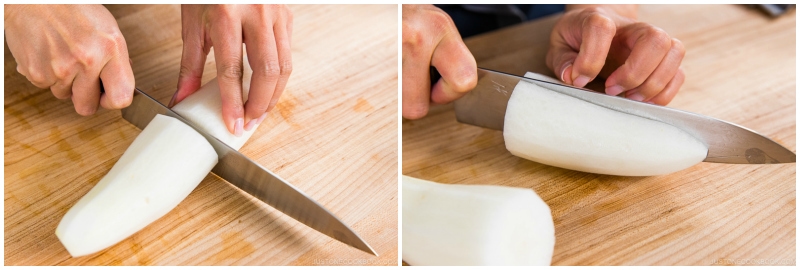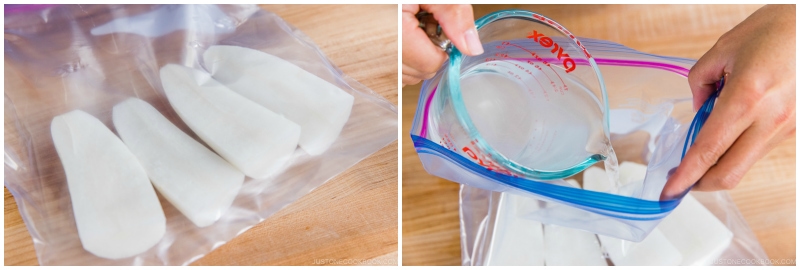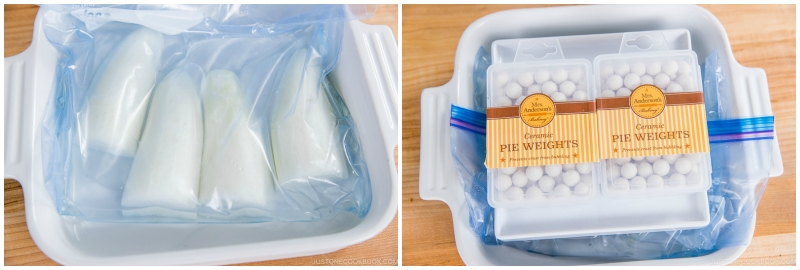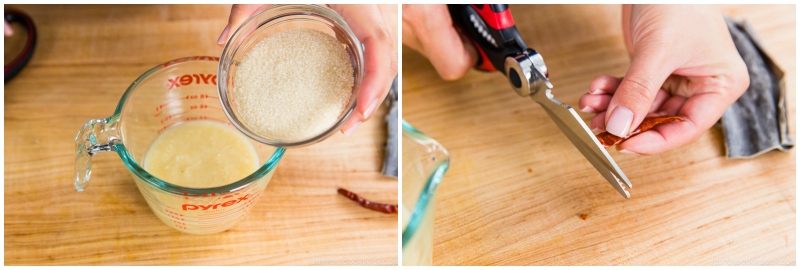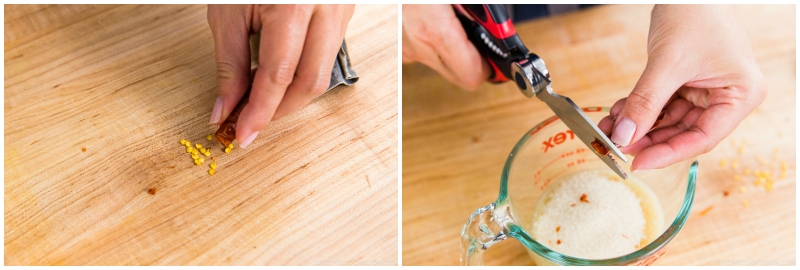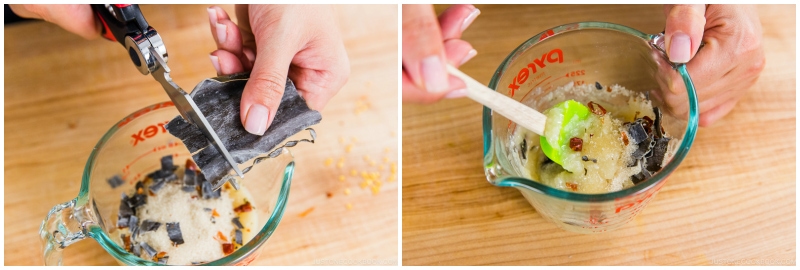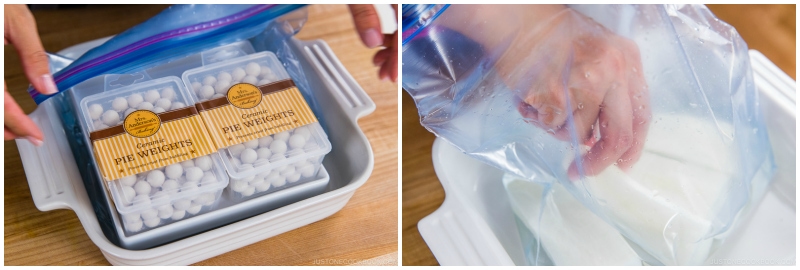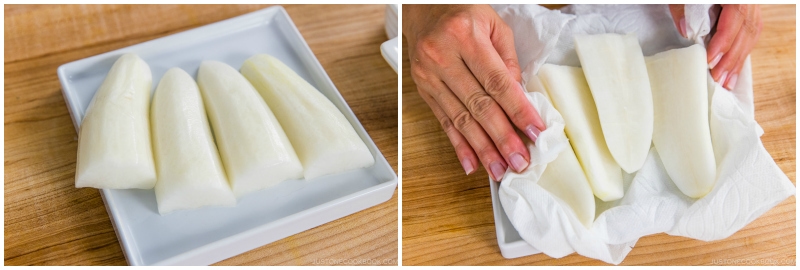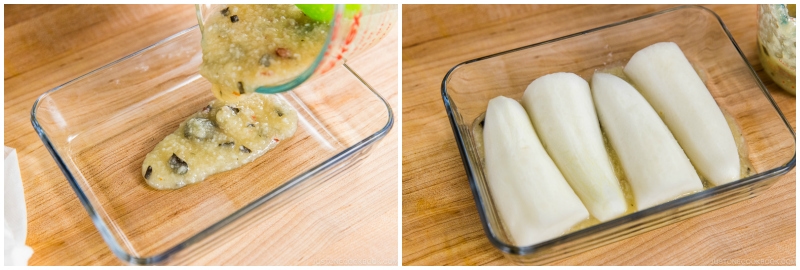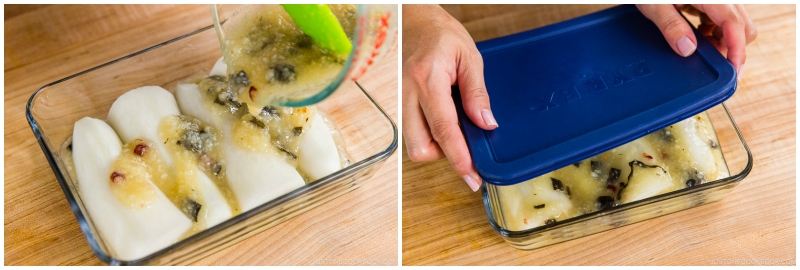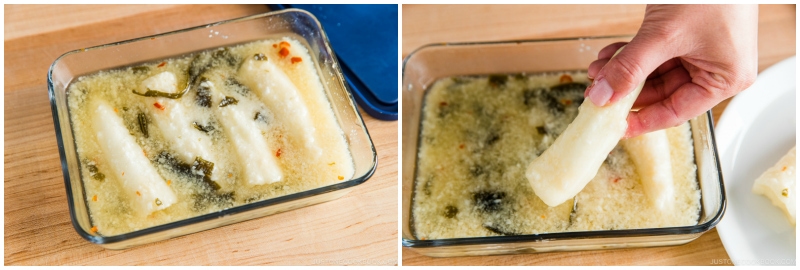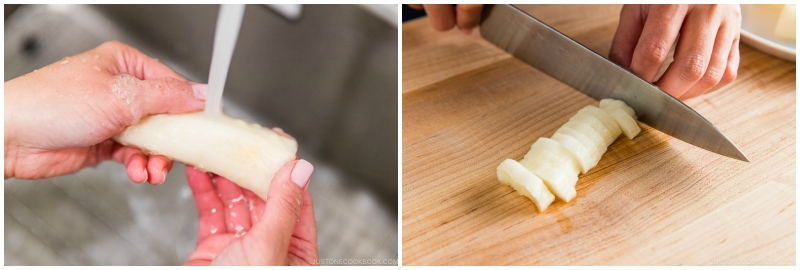In today’s topic, let’s learn about Shiokojizuke (塩麹漬け), a Japanese pickling method using salt koji mold (shio koji). It is one of the easiest types of Japanese pickles known collectively as tsukemono (漬物). You can pickle all sorts of vegetables with this technique, but since daikon is available year-round, I’ll show you how to make Pickled Daikon with Shio Koji (大根の塩麹漬け).
Tsukemono – Japanese Pickles
Japanese pickles are called Tsukemono. Before we start, if you’re interested in learning more, read Tsukemono: A Guide to Japanese Pickles on my blog. Tsukemono has several types based on the pickling agent:
Shiozuke (塩漬け) – salt Suzuke (酢漬け) – vinegar Amazuzuke (甘酢漬け) – sugar and vinegar Misozuke (味噌漬け) – miso Shoyuzuke (醤油漬け) – soy sauce Kasuzuke (粕漬け) – sake kasu (lees) Shiokojizuke (塩麹漬け) – rice koji/mold-cultured rice Nukazuke (糠漬け) – nuka (rice bran) Karashizuke (からし漬け) – Japanese hot mustard karashi Satozuke (砂糖漬け) – sugar
I’ve shared the highlighted pickling methods above in the series, but we’ll focus on Shiokojizuke (salt koji pickling) today.
What’s Shio Koji?
Shio koji (塩麹, 塩糀) or salt koji is a natural seasoning, which is used to marinate, tenderize, and enhance the umami in foods. It’s made of just a few simple ingredients: salt, water, and rice koji. Because koji (koji mold spores) is a live food that is rich in enzymes, we need enzymes to break down starches and proteins in food (such as daikon in this recipe) into sugars and amino acids respectively. This process makes the food naturally sweet, aromatic, and rich in umami.
Health Benefits of Shio Koji
Because it is a fermented ingredient, shio koji is known for its many health benefits, which include (source):
A natural pro-biotic seasoning Tenderizes food Brings out the umami and sweetness in foods Reduces the intake of salt Aids for digestion Clear the skin Anti-aging Contains minerals, fiber, and vitamins
Where to Get Shio Koji
You can make Shio Koji from scratch if you can find koji at a Japanese grocery store and have the patience to make it. I purchase my favorite Hikari Miso Shio Koji at my local Japanese grocery store (Nijiya Market). You can find it at Japanese grocery stores and a big Korean grocery chains like H-Mart. Check at the condiment section or refrigerated section of the store. When you open the bottle, you will immediately notice the sweet smell that reminds you of sake. With the help of all-natural koji, you will notice a significant flavor boost in your daily cooking!
How to Use Shio Koji
You can use shio koji to marinate your meats and vegetables, make pickles, or use it as a salt substitute. Shio koji is REALLY versatile and I’ve used it to make some delicious recipes on Just One Cookbook. If you’re not sure, start using shio koji to replace salt. In a recipe that calls for one teaspoon of salt, you can substitute it with two teaspoons of Shio Koji. You will not only get the “salt” effect but also experience the “umami bomb” effect!
3 Steps to Pickle Daikon with Shio Koji
Hands-on time for this recipe is very minimal. I usually make this recipe while I am preparing for dinner and have some time in the kitchen. Here are the 3 easy steps:
Step 1: Remove moisture from daikon – Soak daikon in saltwater overnight. Step 2: Make shio koji mixture – Make a flavorful shio koji mixture. Step 3: Pickle daikon – Put the daikon in the mixture for several hours up to 2 days.
See the recipe below for detailed instructions. The pickled daikon makes an ideal accompaniment when you serve rice and miso soup. It’s a palate cleanser and you only need 2-3 slices for each person. Serve them on a tiny plate (mame-zara), or on a medium plate where people can take as much as they like.
Other Shio Koji Recipes on Just One Cookbook
Shio Koji Chicken Braised Herb Chicken with Shio Koji Shio Koji Karaage Grilled Mackerel with Shio Koji
Wish to learn more about Japanese cooking? Sign up for our free newsletter to receive cooking tips & recipe updates! And stay in touch with me on Facebook, Pinterest, YouTube, and Instagram.

